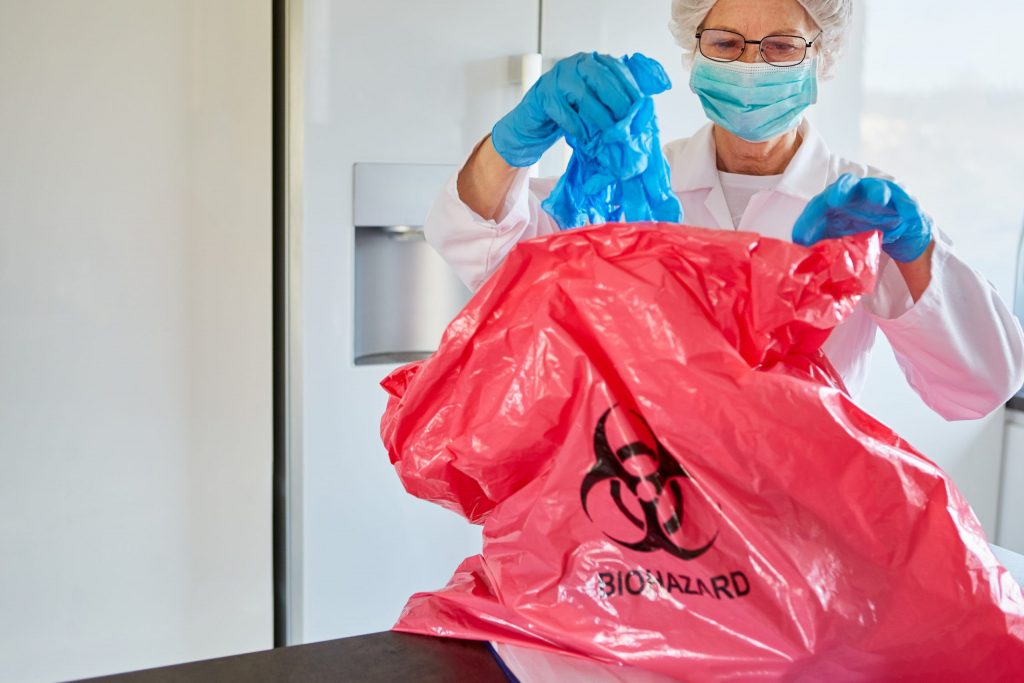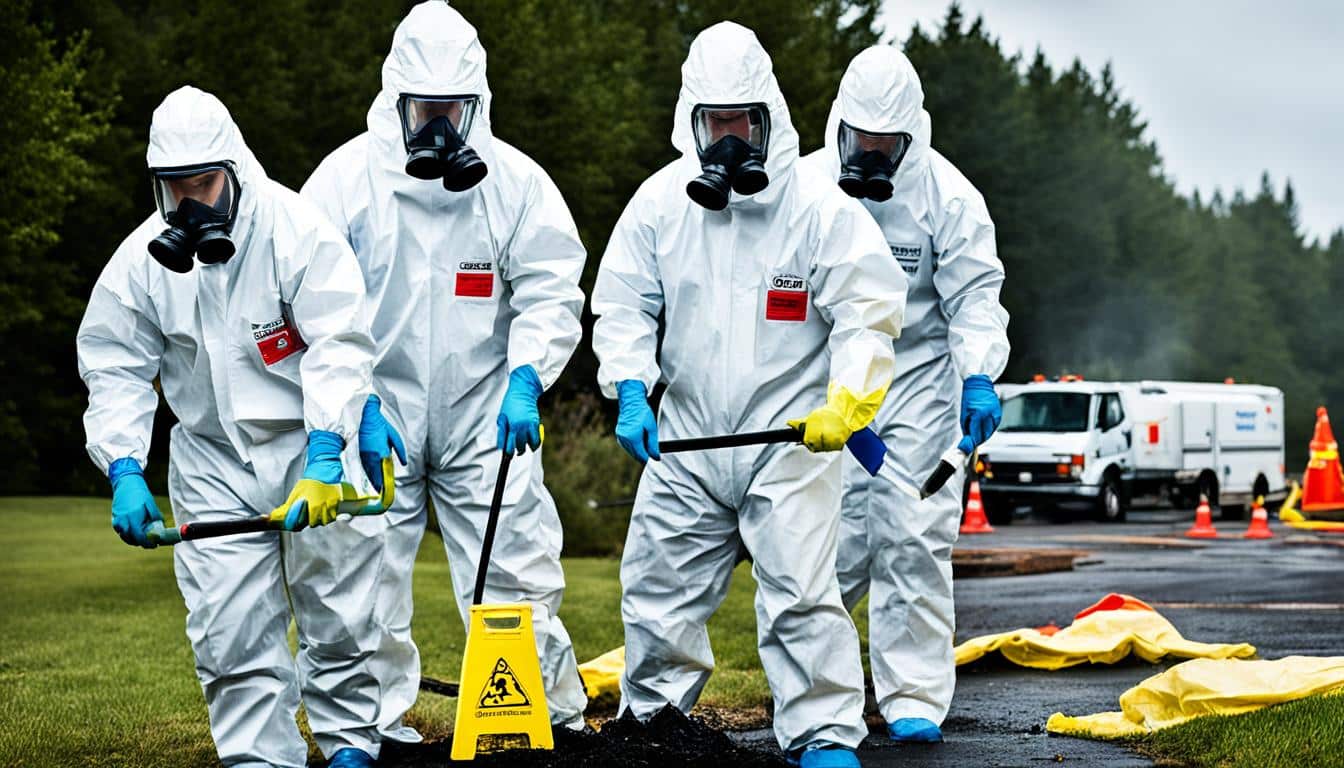Expert Blood Cleanup: Making Certain Safe and Thorough Decontamination
Expert Blood Cleanup: Making Certain Safe and Thorough Decontamination
Blog Article
Specialist Biohazard Cleansing and Purification for Blood, Bodily Fluids, and Hazardous Products
In the world of biohazard cleaning and decontamination for blood, physical liquids, and dangerous materials, precision and competence are critical. The possible health and wellness risks related to exposure to biohazards underscore the essential need for precise handling and complete cleanup. Specialized training outfits specialists with the understanding and skills necessary to resolve these unsafe situations successfully. Nevertheless, it is not merely about tidying up; the significance of employing proper purification techniques can not be overemphasized. As we navigate the complex landscape of biohazard clean-up, comprehending the nuances of regulations, conformity, and the specific tools at play ends up being essential in making sure a secure and comprehensive decontamination procedure.
Health And Wellness Threats of Biohazard Exposure
Exposure to biohazards postures significant wellness risks that can lead to extreme repercussions for communities and people alike. Biohazards include a large range of biological materials, including blood, bodily fluids, mold and mildew, germs, infections, and various other possibly contagious materials. When people enter contact with these biohazards, whether via accidents, inappropriate handling, or ecological exposure, they encounter the danger of having significant illnesses or illness.
One of the primary health and wellness threats associated with biohazard direct exposure is the transmission of infectious diseases. Bloodborne microorganisms such as HIV, hepatitis B and C, and various microorganisms can be present in biohazardous materials, posturing a direct hazard to human wellness. Breathing in air-borne biohazards like mold and mildew spores or entering into contact with infected surface areas can also cause breathing issues, allergic reactions, and various other adverse wellness effects.
Furthermore, biohazard exposure can have long-term health effects, with some diseases materializing years after the first call (Blood Cleanup). Therefore, it is crucial to prioritize proper biohazard cleansing and purification to minimize these health dangers and ensure the safety of people and areas

Specialized Educating for Biohazard Cleanup
When it comes to taking care of biohazard clean-up effectively and securely, specialized training plays a fundamental duty in guaranteeing proper purification treatments are adhered to. Biohazard cleanup requires specific knowledge and skills to efficiently reduce risks linked with bloodborne virus, physical fluids, and hazardous materials. Experts learnt biohazard clean-up undertake strenuous guideline on how to securely deal with, get rid of, and throw away biohazardous materials to protect against contamination and direct exposure.
Specialized training for biohazard cleanup covers a series of essential topics, including appropriate personal protective devices (PPE) use, bloodborne pathogen awareness, purification strategies, and contaminated materials disposal procedures. People trained in biohazard clean-up are geared up with the required proficiency to assess contamination levels, recognize potential risks, and execute proper cleanup procedures in compliance with regulative criteria.
Continuous training and education are paramount in the field of biohazard clean-up to remain updated on the most recent purification technologies, safety and security protocols, and guidelines. By purchasing specialized training, biohazard cleaning specialists can effectively react to emergency situation clean-up situations and guard both public health and wellness and the environment.
Value of Proper Purification Methods
Making use of appropriate purification methods is essential in biohazard cleaning to efficiently get rid of dangerous products and lessen health and wellness risks. Reliable purification not only makes sure the elimination of visible traces of blood, physical liquids, and other biohazards yet likewise targets undetectable virus that may present major wellness dangers otherwise effectively gotten rid of. By complying with rigorous decontamination procedures, educated professionals can dramatically reduce the risk of direct exposure to dangerous microbes, viruses, and bacteria that could result in illness or infections.
Appropriate purification methods include using customized tools and disinfectants that are particularly designed to neutralize biohazards properly. Thorough cleaning and sanitation of contaminated locations are vital to prevent the spread of pathogens and ensure a secure atmosphere for occupants. Additionally, the proper disposal of biohazardous waste complying with decontamination procedures is here are the findings important in stopping contamination of other surfaces or people.

Devices and Devices for Safe Clean-up
When dealing with blood, bodily fluids, or unsafe products, biohazard cleansing professionals depend on specialized gear to decrease direct exposure risks and extensively sanitize the damaged location. In addition, biohazard cleaning packages including disinfectants, absorptive products, and biohazard bags are used to safely include and get rid of of you can try these out polluted things.
Advanced cleansing tools like hospital-grade disinfectants, HEPA-filtered vacuum cleaners, and fogging devices are used to sterilize surface areas and get rid of biohazards efficiently. Specialized devices such as sharps containers and biohazard garbage disposal containers are used to safely handle sharp things and biohazardous waste products. By making use of the best devices and devices, biohazard cleaning professionals can make certain an extensive cleaning process that prioritizes safety and reduces health and wellness risks for both workers and occupants of the afflicted space.
Rules and Compliance in Biohazard Cleansing
Correct adherence to regulations and conformity standards is paramount in biohazard cleansing to make sure the security of both personnel and the atmosphere. Federal government companies such as OSHA (Occupational Safety and Health Administration) and the EPA (Environmental Defense Company) have established details guidelines for biohazard clean-up procedures to reduce health risks and environmental contamination. These guidelines cover a series of facets including the handling, transport, and disposal of biohazardous products, in addition to the essential training and protective tools needed for workers included in the clean-up process.
Biohazard cleaning firms must remain updated with these policies to guarantee that their procedures meet the needed safety standards. Failing to abide by these policies can cause extreme consequences, consisting of fines, lawsuit, and endangering the wellness of individuals and the setting. By complying with rigorous guidelines and conformity procedures, biohazard cleansing business can successfully minimize risks and ensure a click safe and comprehensive cleanup procedure for all celebrations involved.
Conclusion
To conclude, biohazard cleaning and decontamination need customized training, proper strategies, and adherence to policies. Direct exposure to blood, bodily fluids, and dangerous products presents considerable health risks, making it vital to make use of the right devices and devices for secure clean-up. By complying with strict procedures and guidelines, experts can effectively alleviate the threats associated with biohazard direct exposure and ensure the safety and security of both themselves and others.
As we browse the complex landscape of biohazard cleaning, recognizing the subtleties of regulations, compliance, and the customized equipment at play comes to be essential in guaranteeing a comprehensive and safe decontamination procedure. (Blood Cleanup)
When it comes to managing biohazard cleanup efficiently and securely, specialized training plays an essential role in ensuring correct purification procedures are adhered to.Utilizing correct decontamination strategies is critical in biohazard clean-up to effectively remove dangerous products and reduce wellness risks. Furthermore, biohazard cleansing kits having disinfectants, absorbent products, and biohazard bags are used to safely consist of and dispose of polluted products.
Government agencies such as OSHA (Occupational Safety and Health Management) and the EPA (Environmental Protection Agency) have actually developed specific standards for biohazard cleanup procedures to decrease health dangers and ecological contamination.
Report this page